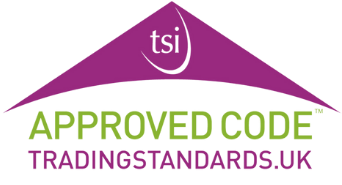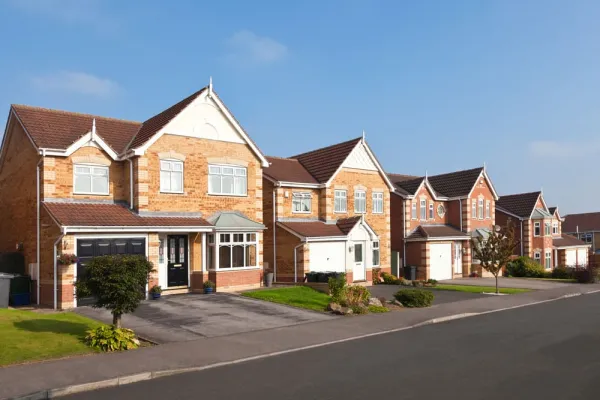There are lots of different property types across the UK.
If you are looking for the ideal place to live, you need to consider the features of every one.
Terraced properties are one of the most common house types in the country. Semi-detached properties rank highly on the list, too.
So, what is the difference between these two house types? And which one is best suited for you?
Read our analysis of terraced house vs semi-detached in the blog below.
What is a terraced house?
A terraced house is part of a long line of properties that are all connected. There will be at least three houses in the row.
In other cases, the figure can rise to double digits.
Terraced properties are common in city centres and have limited space.
It enables local councils to fit more residents into a set area than detached houses with lots of surrounding land.
A terraced property usually has:
- Two stories
- Shared walls on either side
- Its own walkway
- Its own garden with fences on either side.
It is rare for a terraced house to have a dedicated driveway. Instead, there is often shared parking on the road at the front.
End of terrace
An end of terrace house refers to the house at the end of a line of terraced house.
This property only shares one wall with neighbours; the other one is free.
Cost of terraced houses
An end of terrace is more expensive on average because of the increased privacy.
The average terraced house in the UK costs £234,048. This is less expensive than semi-detached houses on average.
What is a semi-detached house?
A semi-detached house connects to one other property. It is pricier than a terraced house but less expensive than a detached property.
A semi-detached house usually has:
- Two storeys
- A shared wall with a neighbour (the other is free)
- A driveway
- A garden.
The semi-detached model is less efficient for high population density than terraced properties.
They are thus less common in city centres, but popular in towns and villages. It often has a higher square footage than a terraced house.
Cost of semi-detached houses
The average semi-detached house in the UK costs £278,793. This is more than £44,000 greater than a terraced property.
Larger families often choose this property type for that reason.
Advantages and disadvantages of a terraced house
Advantages
A significant advantage of terraced properties is their affordability. They are more affordable than semi-detached homes and thus ideal for a smaller budget.
Terraced houses are also often found in the centre of cities and towns. You may have better access to transport and amenities.
Mid-terraced properties tend to be more energy efficient. They have thick brick walls on both sides and connect to houses that are also heated.
This improved energy efficiency can save you hundreds on your annual energy bills and improve the value of your property.
An end of terrace has similar features and advantages as a semi-detached house. It is often at a more affordable price.
Disadvantages
Parking is often an issue with terraced houses. It is rare to have a designated driveway, so you must fight for spaces on the street.
You cannot control your neighbours’ behaviour. If you share walls with problematic residents, noise can become an issue.
The likelihood of this doubles since you share two walls, rather than one.
Renovations and extensions can be difficult with a terraced house. New plans will often fail for blocking out natural lighting.
There is also limited space to expand into because you cannot extend the house sideways. You may need to contact all your neighbours for permission.
But only one objection can prevent you from proceeding.
Many estate agents argue that terraced houses have low curb appeal. This is because the exterior is similar to others.
Advantages and disadvantages of a semi-detached house
Advantages
Semi-detached houses often have greater square footage than terraced properties.
They can have more than two storeys in some occasions along with more surrounding land to extend onto.
Getting planning permission for extensions is far easier than it is for terraced properties. The house is better suited for larger families.
You also have more privacy with a semi-detached house. A hedge may separate your gardens, and you only share one wall with a neighbour.
You typically have your own driveways, so you don’t have to speak to your neighbour if you don’t want to.
Semi-detached houses are often found in less populated locations. This might be ideal if you prefer a quieter lifestyle, away from a busy city centre.
Disadvantages
On the other hand, semi-detached houses are pricier than terraced. If you are on a tight budget, then this can be difficult.
For example, an end of terraced house has similar features, but is usually less expensive.
Your house is also not as well protected from natural elements. This means that energy efficiency may be lower on average.
Many estate agents argue that semi-detached houses have low curb appeal.
Which type of house should I buy?
You have more than two options when it comes to buying a house.
Flats or detached houses may be within your price range if you compromise on location or size.
Your sociableness is important when comparing terraced and semi-detached properties.
If you want privacy, then semi-detached is better. By contrast, terraced houses might offer greater community in some cases.
The number of cars in your family is significant, too. Living in a terraced house may be challenging if you have three or more.
An end of terrace could be possible if it has a driveway. Otherwise, opt for a semi-detached property.
You will find greater terraced properties available if you prefer a central city location. If you want to live in the countryside, semi-detached houses will likely be in greater supply.
Your budget is another important factor. The average semi-detached house is more expensive than a terraced.
If you have lots of cars or a large family, you may need to find a way to raise the extra capital. Otherwise, selling a car or room sharing could be necessary.
Semi-detached properties also make more sense as an investment if you plan to extend. It is easier to do this compared to terraced properties.
Speak to an independent property expert for guidance tailored to your situation. There are dozens of factors to consider.
These include your finances, personal situation and family size. Your desired location and sociableness are also critical.
















